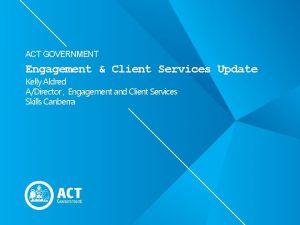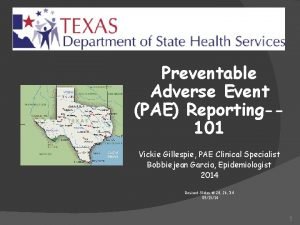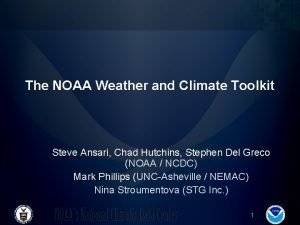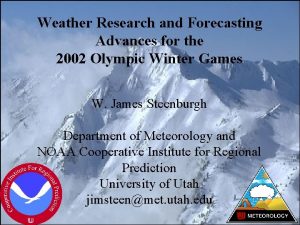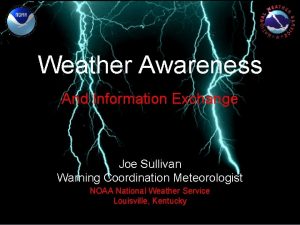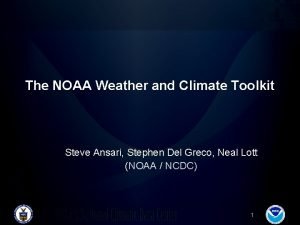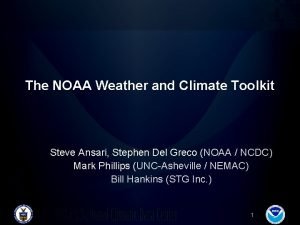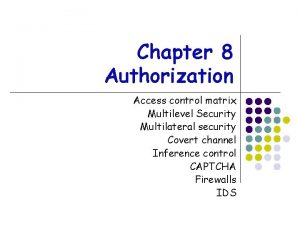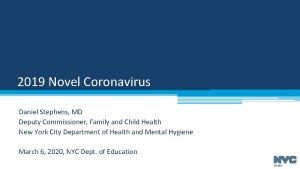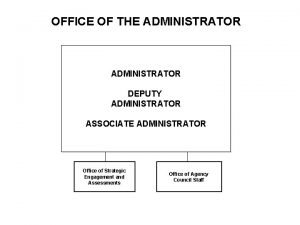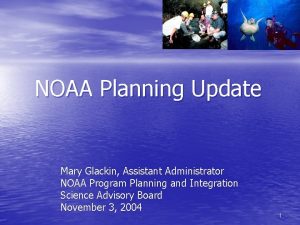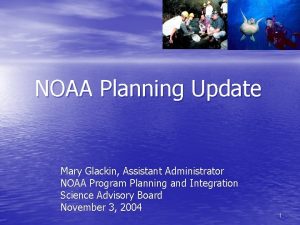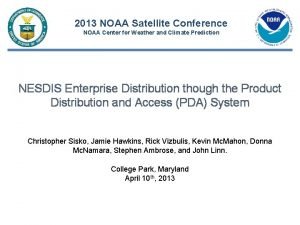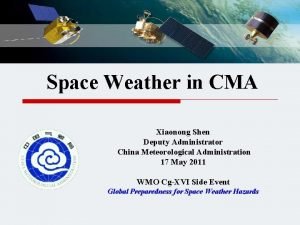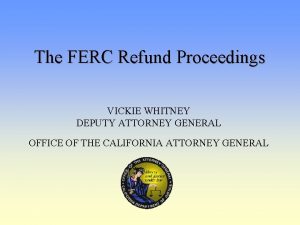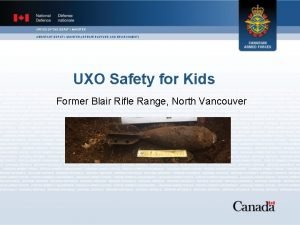Vickie Nadolski NOAA Deputy Assistant Administrator for Weather












- Slides: 12

Vickie Nadolski NOAA Deputy Assistant Administrator for Weather Services, and National Weather Service Deputy Director Space Weather Workshop Boulder, Colorado April 29, 2009

Increasing Public Awareness News media and Hollywood taking notice of potential space weather impacts

Increasing Public Awareness Customer Growth During Solar Minimum Solar Maximum Service Begins Total number of Customers Demand for Data Increasing Even During Extended Solar Minimum

Drivers for Space Weather Services Growing demands and opportunities over next decade are complex and diverse • • Evolving technologies: – Civil precision Global Navigation Satellite Systems – Power grids – Satellites (private and government) Evolving customers and industries: – Missions to the Moon and beyond – Commercial space enterprise – Arctic economic development – Airspace management needs – Global partnerships and opportunities

Drivers for Space Weather Services Increasing Power Grid Vulnerability $1 -2 Trillion: Potential loss due to widespread power grid blackout following severe geomagnetic storm 4 -10 years: Recovery time from a widespread power grid blackout following severe geomagnetic storm Source: National Academy Workshop on the Societal and Economic Impacts of Severe Space Weather Events held in Washington, D. C. , May 2008.

Drivers for Space Weather Services Future Demands for Airspace Management • U. S. Next Generation Air Transportation System (Next. Gen) – GPS-based • NWS responsible for primary areas of Next. Gen Weather Initiative • Space weather requirements being defined

Drivers for Space Weather Services Global Partnerships & Opportunities • Collaboration: National Space Weather Program • Strategy: Leverage External Research Activities • Delivery: Space Weather Service Providers Commercial Space Weather Sector

Drivers for Space Weather Services Global Partnerships & Opportunities • Space Weather Now Part of UN – World Meteorological Organization (WMO) – International Civil Aviation Organization (ICAO) – Committee on the Peaceful Uses of Outer Space (COPUOS) – International Heliophysical Year (IHY) – International Space Environmental Service (ISES)

Drivers for Space Weather Services Global Partnerships & Opportunities • Benefits: – Provides greater access to observations, research & modeling – Improves skill of forecasts – Improves regional expertise – Specialization in space weather science & services All of Which Will Reduce Space Weather Threats to Society

Decision Support Services Delivering on a Promise “Deliver high impact weather information with timely, reliable, and authoritative data and forecasts” —NOAA’s Strategy for High Impact Weather: Priority Service Improvements (Aug 2008)

Increasing Need for Decision Support Services help users make sound decisions for high-impact events • Extend support to those users who are vulnerable to space weather – Need to learn, understand, and meet evolving needs for space weather services – Need to strengthen inter-agency and sector collaboration and partnerships

NOAA’s Space Weather Prediction Center The Bottom Line Solar Cycle 24 Maximum: 2012 - 2013
